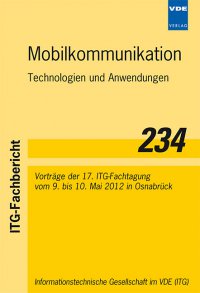Backhaul Link Impact on the Admission Control in LTE-A Relay Deployment
Konferenz: Mobilkommunikation - 17. ITG-Fachtagung
09.05.2012 - 10.05.2012 in Osnabrück, Deutschland
Tagungsband: Mobilkommunikation
Seiten: 6Sprache: EnglischTyp: PDF
Persönliche VDE-Mitglieder erhalten auf diesen Artikel 10% Rabatt
Autoren:
Vitiello, Federica (Nokia Siemens Networks, St.-Martin-Str. 76, 81541, Munich, Germany )
Redana, Simone (Nokia Siemens Networks, St.-Martin-Str. 76, 81541, Munich, Germany)
Hämäläinen, Jyri (Aalto University School of Electrical Eng., P.O. Box 13000, FI-00076, Aalto, Finland)
Inhalt:
Relaying is a feature proposed for the LTE-Advanced system with the aim of enhancing network coverage and capacity at cell-edge. With in-band relay nodes the backhaul link transmission is time-division multiplexed with the access link transmission, while macro users share the same frequency with the relay nodes. The radio frame structure must be properly designed in the presence of relay nodes and a proper admission control algorithm needs to consider not only the resource available for the user links but also the resources available on the relay links. In this paper we show that in relay deployments the backhaul link creates the bottleneck for the number of admitted relay users while the access link is influencing only marginally the overall performance. Furthermore, we analyze the impact of the admission control on the backhaul link using the number of admitted users as a performance measure.


